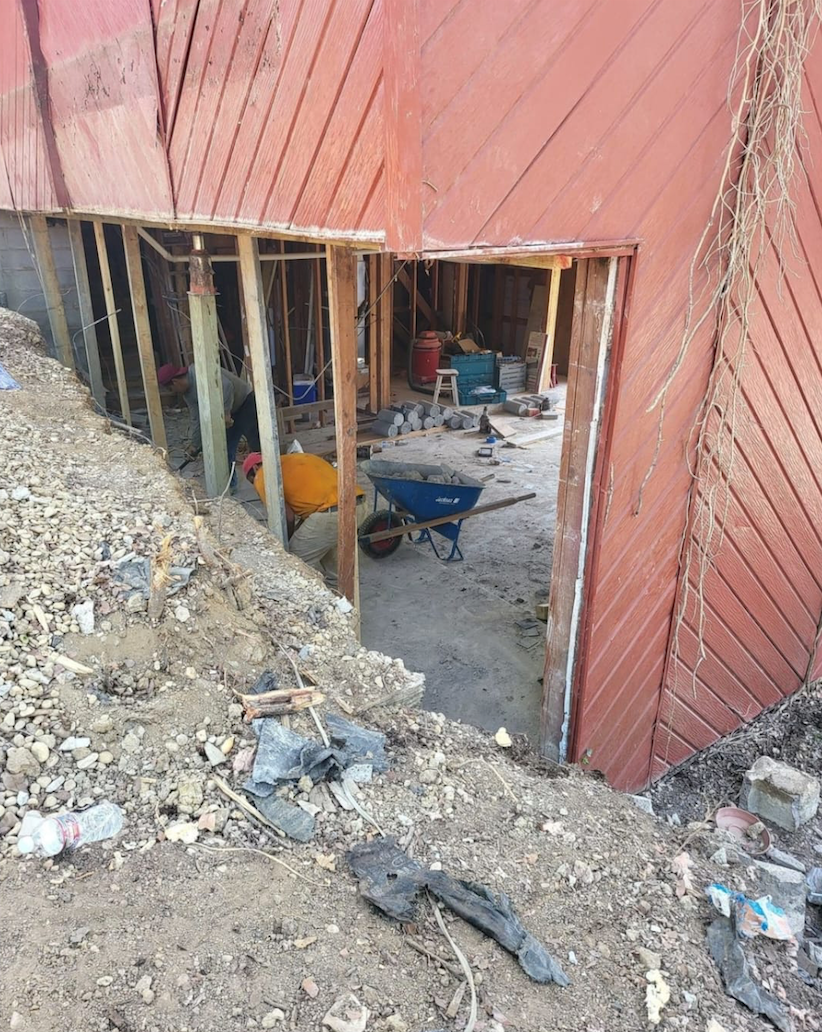BASEMENT ANATOMY
- Albert
- Jun 1, 2023
- 5 min read
For the third post regarding the anatomies of foundations, we will be focusing in basemen foundations. Etymologically, the words basement dates for almost 300 years ago, based on ‘basamento’ which is Italian for ‘column base’. This type of foundation is considered ‘deep foundation’, which means it transfers the loads farther down the surface than shallow foundations one its main purpose is, just like all other foundations, to distribute the building’s weight evenly on the surface, securing it to the ground and stop moisture from getting into the house. In a way it is very similar to Slab on Grade foundations in the sense that is a concert slab with the house build on top of it, only you know, underground.

Now basement foundations are among the most popular type of foundations; or at the very least is the one type of foundation that pretty much everyone knows of, or understands exactly what it is. And one of the reasons why they are so popular? They allow you to squeeze extra living space into your home, and for this reason they generally begin with a hole of at least eight feet deep; to basically ensure accommodating underground living space.
But it is not all wine and roses; the extra living space comes with a high price to pay. Literally. This is the costliest of foundations, and might come with higher maintenance costs. But before getting into the benefits and drawbacks of basement foundations let’s talk about the main types of basement foundations.
First come the full basement foundations. Their perimeter is just the same as the house’s and the entire basement is fully underground. It lacks windows, and in case it does have some, they’ll be very small and a ground level. These basements can be unfinished or finished with flooring, drywall and storage space. This will obviously cost quite a bit more and they might be more susceptible to mold and dampness.
Then come Daylight basements. These are common for houses built on slopes, meaning that one side of the basement is actually underground, while the other is aboveground. This allows some natural light in and are less susceptible to moisture, given the sun rays and ventilation.
Finally, we have to go back to crawl space foundations. Which is practically the happy medium between basement foundations and standard foundations. These leave a small protected area between the ground and the base of the house. Built partially underground but much shorter than foundation walls; they provide water access to piping and plumbing, encouraging airflow beneath the house therefore keeping the house cooler in warmer climates. Being some of the least expensive and time consuming foundations to build, make crawl space foundations greatly favored by homeowners.
Now, into the pros and cons of basement foundations.
Energy efficiency; given that they are not exposed to the elements, they do not require much energy to heat or cool depending on the seasons. This cuts costs on energy bills and make them much more agreeable to the environment.
Then there’s the additional living space; pretty self explanatory right? Money aside, who would say no to additional living and storage space to maximize square footage? And this of course also translates to increase home value, specially when the basement is taken advantage of by creating new bedrooms, kitchens, bathrooms or entertainment rooms.
One other thing that can come quite handy is when basements work as shelters for inclement weather including large storms. They allow you to find refuge at your own home, without having to risk you and your family by facing the weather in order to seek out communal safe places; specially
when tornados and hurricanes are hitting.
Easier access to make plumbing and wire repairs is always greatly appreciated as this will definitely make life much easier, both for the technicians as well as the homeowners.
And finally, as mentioned previously, basement foundations provide far more flexibility when building on uneven slopes.
Switching to the cons, the first and foremost will be the risk of dampness. By the very nature of basements dampness will be an ever present risk. And to mitigate this risk, a sump pump will always be a good idea to insulate water pipes and to keep the foundation without cracks.
A larger issue than dampness is the rotting following after. This might even effect the structural integrity of the house, and this will of course bring swift, devastating effects on your bank account.
Now, less sunlight will be directly related with dampness and rotting, but it will also incur on other expenses, as in order to make a living space out of your basement, you will have to install other sources of light, which will of course incur in higher electrical bills as well.
We already mentioned how these foundations are more expensive; this is due to the more time consuming nature to build them, along with the need of special machinery and tools.
And finally, one small, tiny detail: radon. Odorless, invisible and radioactive. Yes, radioactive. This gas is released naturally from rocks, soil and water and if left uncheck could very easily seep through cracks or holes in the basement walls, and if breathed in high quantities could bring about lung cancer. Fortunately there are radon-resistant building techniques and mitigation systems, but this too, will obviously come at an added cost.
Now, as with every other type of foundation, foundation damage is a reality and can always happen when least expected.

Cracks will always be the most common issues with any type of foundation; in this case the cracks can be patched and waterproofed with masonry sealer. One thing that must be kept in mind at all times is that cracks need to be repaired ASAP. This will prevent them from becoming an active threat to the structural integrity of the house.
Then there’s of course the issue of uneven or sinking concrete of the basement. Slab jacking is one of the methods that might help with this; holes are drilled through the concrete foundation into the sunken spaces below. A mix of soil, cement and natural elements is then injected into this holes, expanding to raise the slab back into place.
Then there’s another method called piling; it consists of installing concrete piers, steel piers, pressed pilings or bell bottom piers beneath the foundation in order to return it to their original form.

There are also other cases in which, while the concrete slab remains in good conditions, the walls of the basement are so severely damaged than there is no other choice than to tear them down. But how do you go about tearing down the walls of the basement without having the house crumble on top of you? Well, for this we suspend the house using posts or pilings, while we break down and subsequently rebuild the walls. Once they are dry and carefully take away the pilings in order to lay the house back into place.
So, remember, whatever kind of foundation you have for your home it is essential to be on the lookout for any sign of trouble. However, when that happens you will always have us experts at your full disposal! Whether it is for inspections, repairs or additional services, you and your home will not regret calling us.




Comments